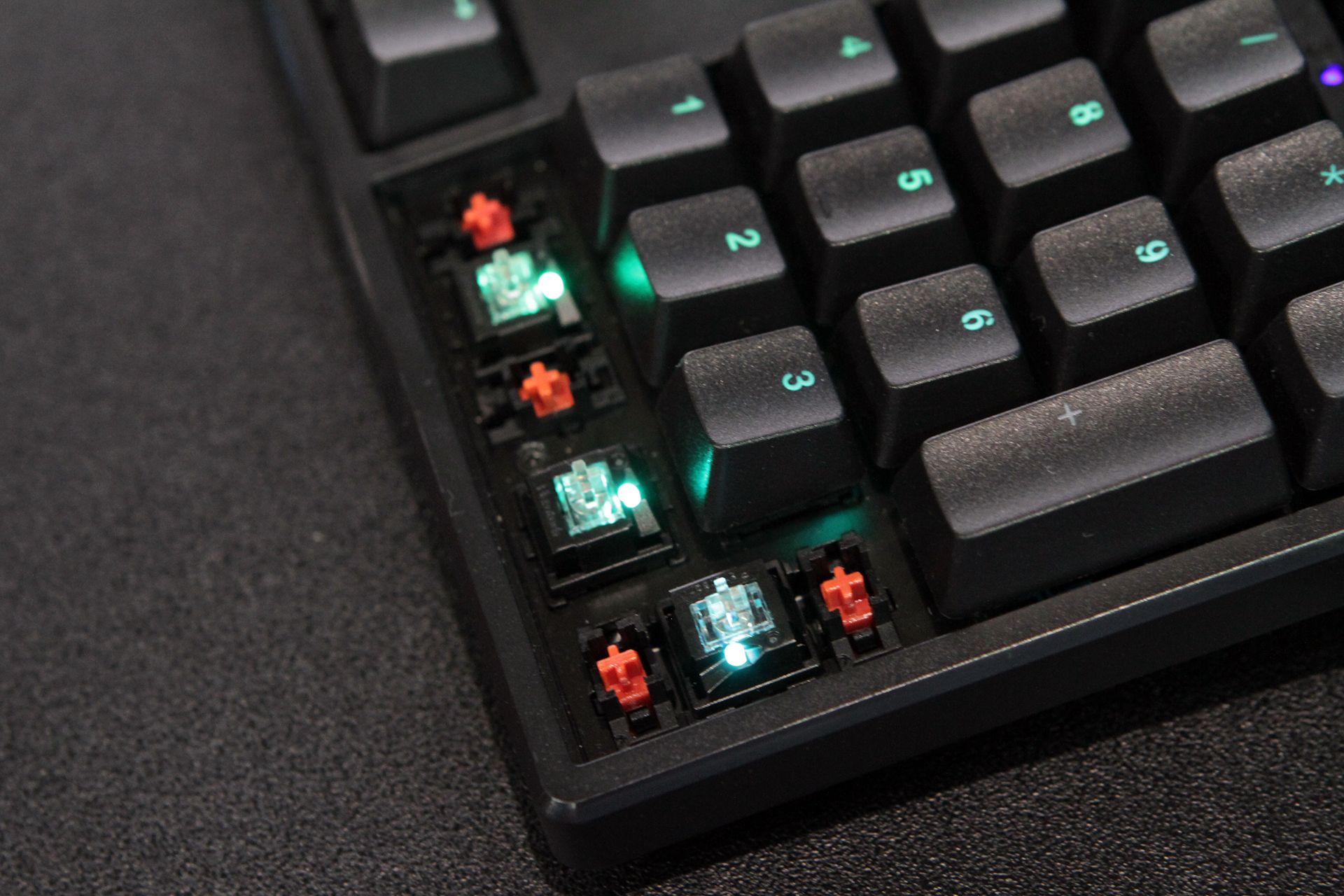Ducky Shine 6 RGB, Year Of The Monkey, Pocket
No dear reader, that headline is not a collection of randomly generated words and numerals (although it does rank right up there as one of the weirdest headlines I’ve penned). It is a simple list of the three main products keyboard maker Ducky was showing off at its Computex booth.
Unfortunately, details and specifications are slim. Despite overtures through multiple channels, no one from Ducky has offered any additional information, and so we are left with what we gathered in person on the show floor. We did, however, dig up this link. Although a Ducky representative confirmed that this is an official document, that individual also stated that the final specifications may change.
So it goes.
The Shiners
Ducky went RGB with the latest in its Shine series of keyboards. The Ducky Shine 6 RGB also has two side pieces whose lighting you can control with keyboard commands. It has silicon rubber feet, as well as a handy mouse bungee, and there’s slightly better (left and right) cable management.
The Shine 6 Year Of The Monkey is similar to the Shine 6 RGB (including the mouse bungee), but it has an aluminum top panel and yellow striping and graphics.
Both keyboards are full-size (108-key) models and feature Cherry MX Red RGB switches, and they both have PBT Double Shot caps, USB interfaces, NKRO and the Ducky Software Controller.
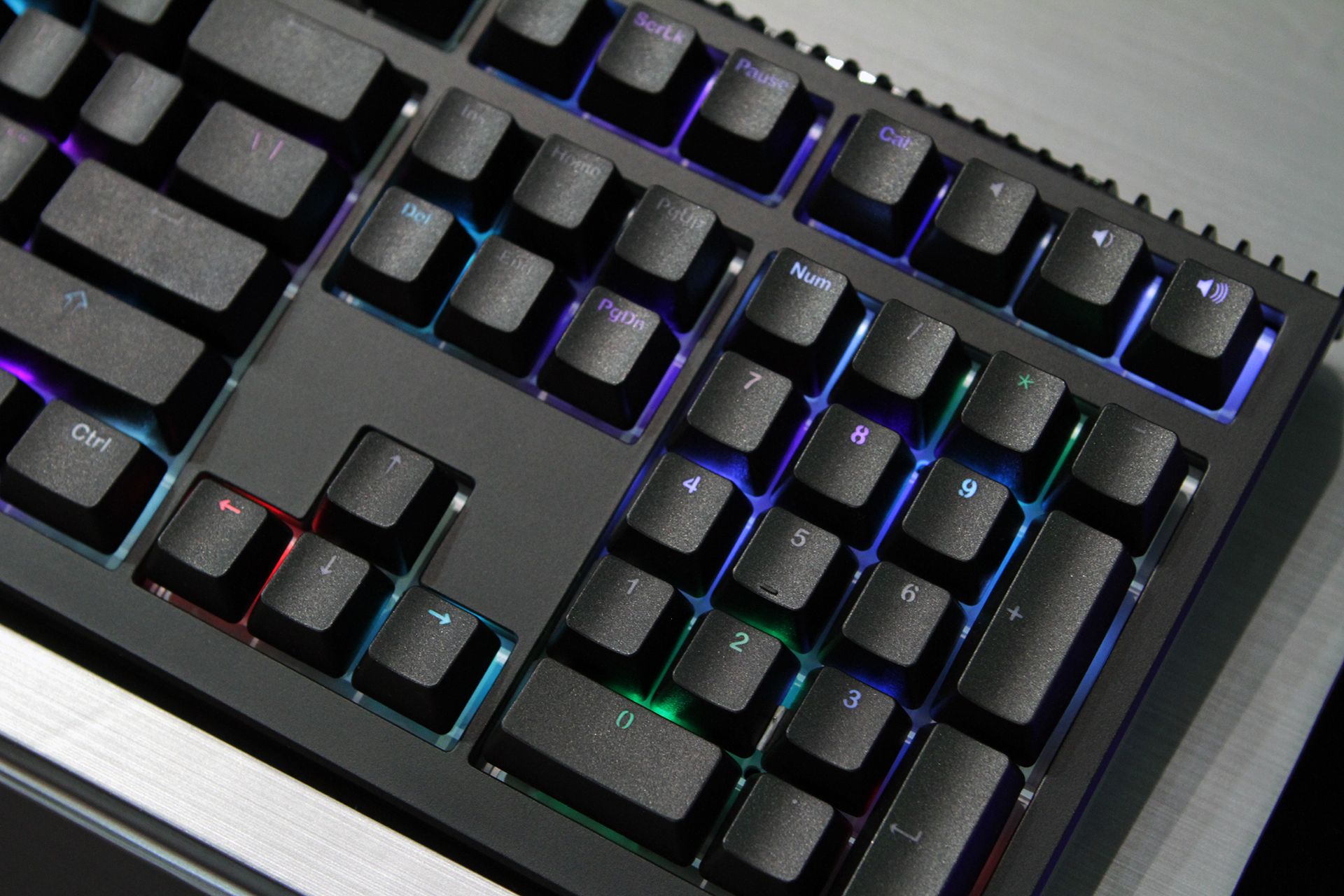

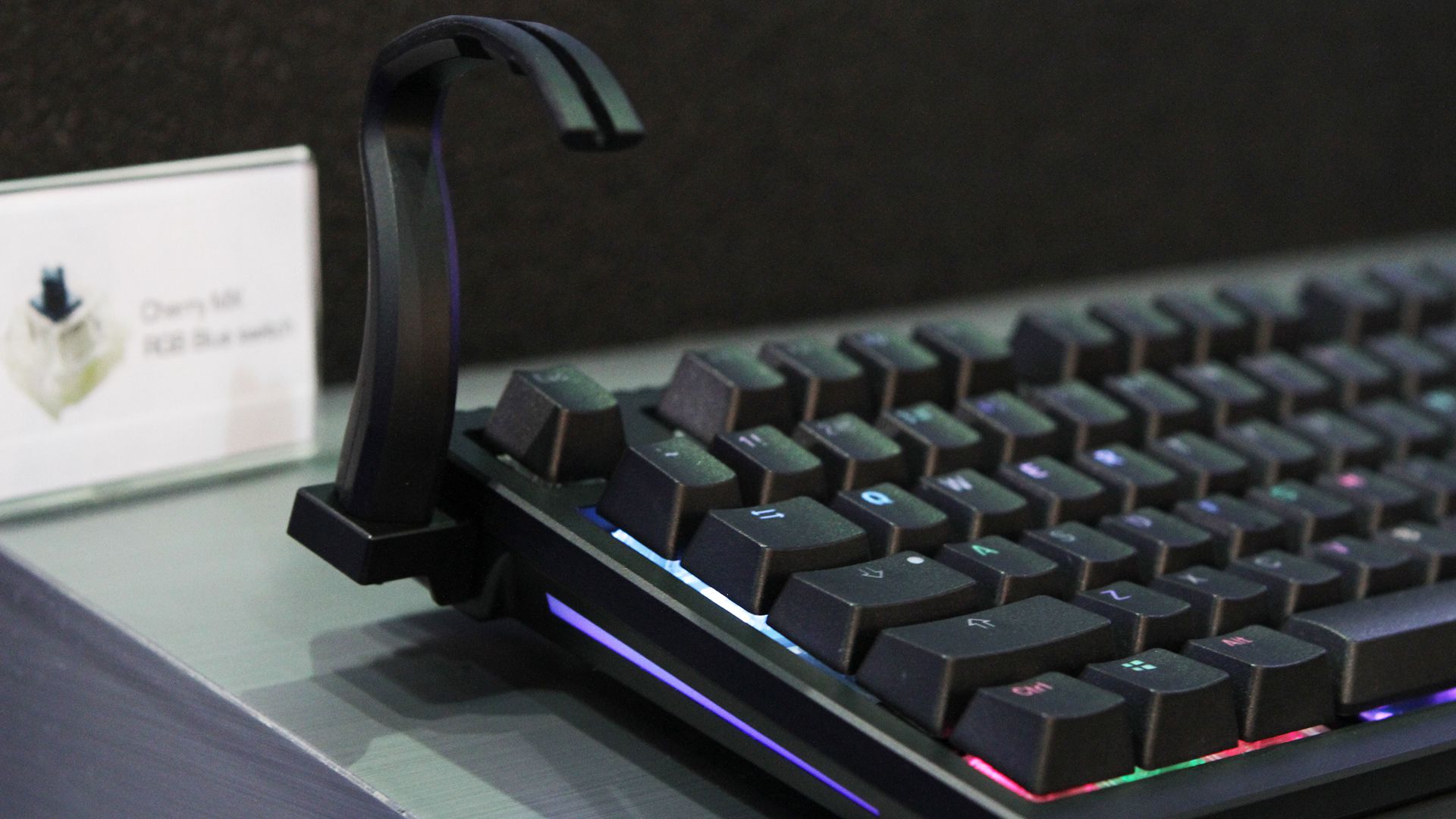




Is That A Pocket In Your Pocket?
One of our regular contributors claims that all full-size keyboards are actually left-handed keyboards. His tongue-in-cheek point is that it would make more sense to place a numpad on the left side of a keyboard instead of the right so your mouse hand is free. True, many people are used to punching in numbers with their right hand, but for average users, the numpad seems almost vestigial. For power users who use lots of macros, it would probably be more convenient to use the numpad as a de facto bank of macro keys, and that bank would be better on the left side of the keyboard than the right.
Get Tom's Hardware's best news and in-depth reviews, straight to your inbox.
We’ve seen several keyboards with removable numpads that you can attach to either the left or right side of a keyboard, and Ducky has followed suit with the Pocket--ostensibly a “calculator” that is very much a detachable numpad. However, unlike other solutions from the likes of Asus, Epic Gear and Tesoro, the Pocket isn’t necessarily designed to work with any specific keyboard. Instead, Ducky seems to have created the Pocket as a standalone device.
As such, you can connect it to your PC and use it as a calculator, or as a numpad with a TKL or 60% keyboard, or as a bank of macro keys (with proper software support). Your PC can recognize both the Pocket and another keyboard at the same time.
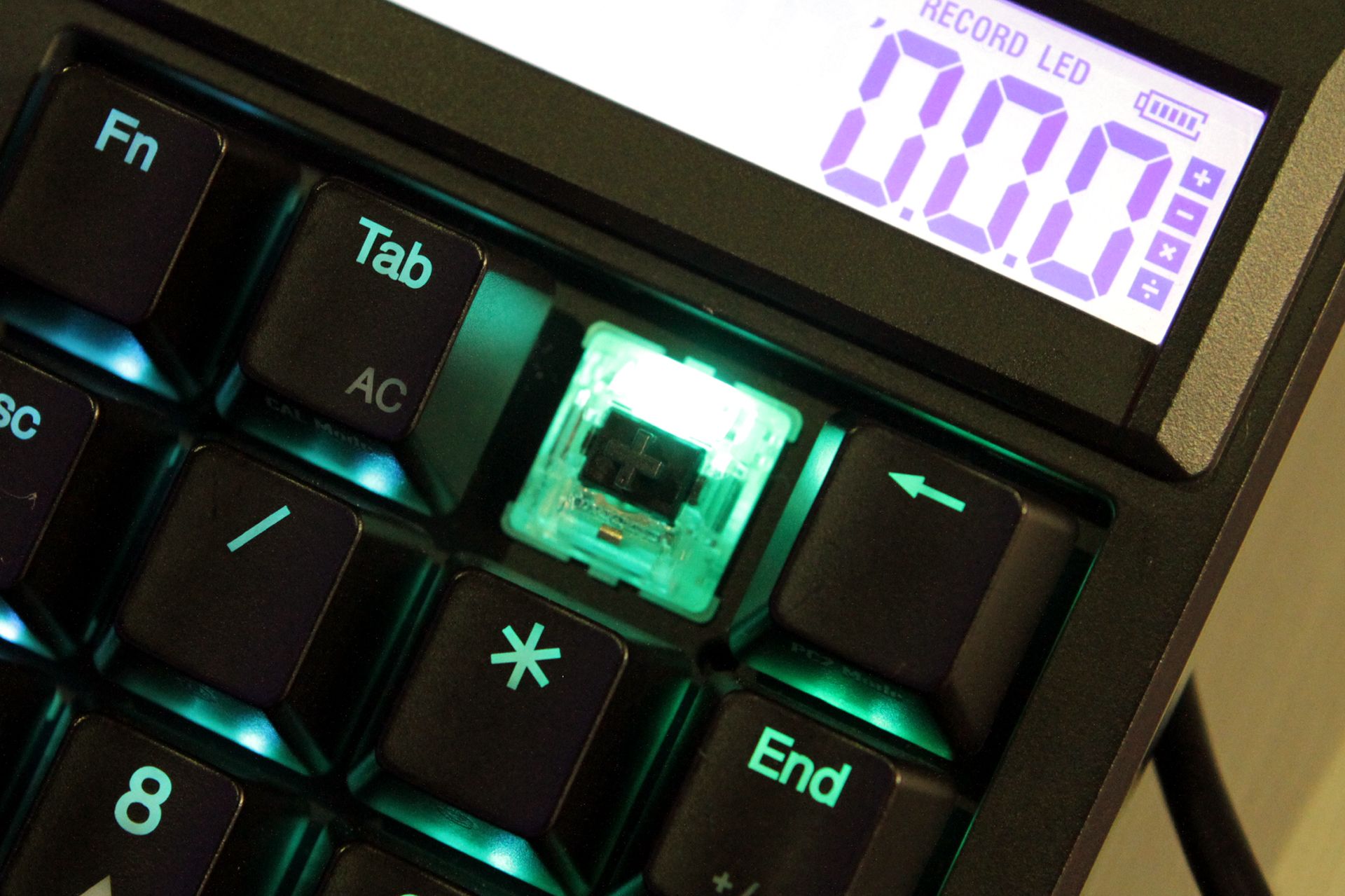
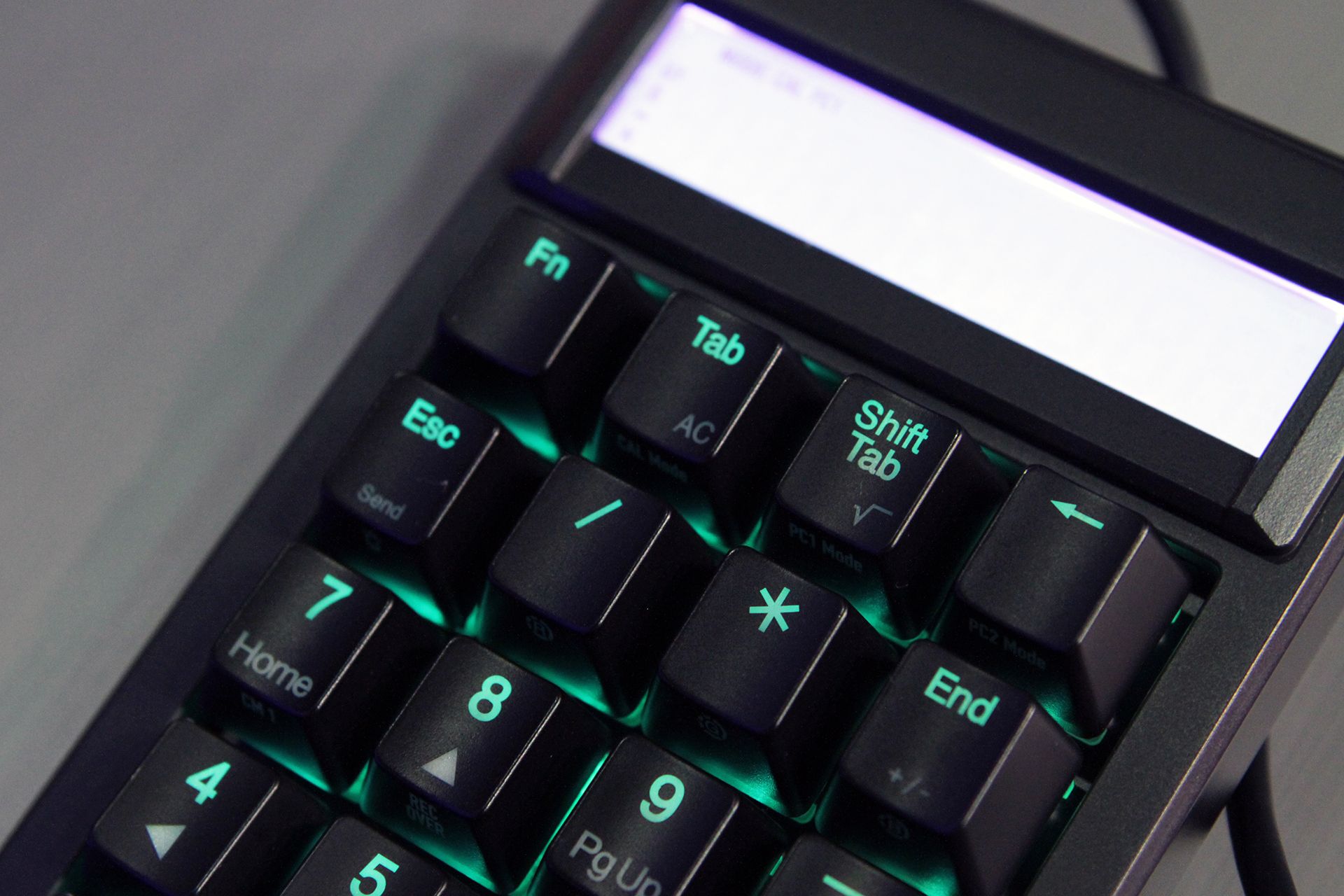

This is not just some plasticy thing, either. Ducky saw fit to offer the 23-key Pocket with any Cherry MX RGB switches. The device has NKRO and connects via USB. The USB is also how it can receive power, although you can also run it on a battery. (Presumably, that means there will be a wireless connectivity option--likely via Bluetooth--which could make the Pocket a handy accessory for laptop users.) When connected, it also has a monocolor display with simple digital characters--just like your old calculator--so you can participate in the time-honored tradition of killing time in math class spelling out words on it. (808’s your uncle.)
Ducky did not reveal pricing nor availability of the Ducky Shine 6 RGB, Year Of The Monkey, or Pocket.
Optical Switches!
A final treat at Ducky’s Computex booth was a nondescript little display that caused me to double-take. The company had a staid black keyboard on a small table with a placard that read, simply, “Flaretech Switch, Optical Lens Mechanical Switch.”
A Ducky rep on hand confirmed that the company was planning to roll out a keyboard with the Flaretech switches. No other details are available at this time; my assumption is that the company was using the show to gauge visitor and media reactions to the possibility of an optical switch keyboard. (Now’s your chance to let them know your thoughts via the comments section below.)
You’ll note that optical switches--particularly those from Flaretech--present some intriguing possibilities for input.
Seth Colaner previously served as News Director at Tom's Hardware. He covered technology news, focusing on keyboards, virtual reality, and wearables.
-
KaiserPhantasma what again is the difference of this new "optical" switches vs standard mechanicals (cherry,kailh,romer,razer switches but really build quality is the difference at least for me)?Reply -
anbello262 The title was confusing enough to catch my attention, it even made me read an article about peropherals I don't even like.Reply -
TechyInAZ I've always wondered why the numpad is on the right of the keyboard and not on the left. It would be much more ergonomic to have the numpad on the left side of the keyboard. :)Reply -
Gabis Kaiser: The difference between an optical switch and current switches is that optical switches can be used for analog input. This allows for a lot of interesting things, not the least of which is the ability to adjust the actuation point of each switch individually if the firmware/software allows it.Reply -
anbello262 What I would really enjoy is configurable pressure sensitive keys. Like controller buttons.Reply
Being more used to a keyboard, I would really enjoy being able to play racing games that way, for example. -
Gabis Reply18268143 said:What I would really enjoy is configurable pressure sensitive keys. Like controller buttons.
Being more used to a keyboard, I would really enjoy being able to play racing games that way, for example.
This is exactly what optical switches will allow for. Analog input.
Check out the Wooting One keyboard, they've been working on bringing this to market for awhile and are relatively close to doing so.
-
anbello262 I will be looking forward to advances in this technology, then.Reply
(I still feel it would have been way better 10 years ago, but I will still be really excited if they get released)
